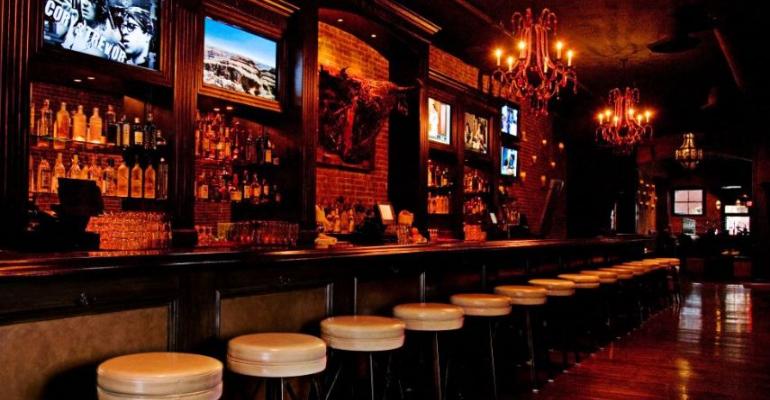California released Tuesday a set of guidelines restaurants should follow before resuming dine-in services, a list that focuses more on physical distancing rather than occupancy caps, Gov. Gavin Newsom said.
The guidelines are reserved for establishments in jurisdictions that have met the state’s Phase 2 reopening criteria. Bars are not part of this phase.
The wide-ranging guidelines provide a glimpse into a new normal for California diners and restaurants in a COVID-19 environment. Many touches common among casual and fine dining restaurants will be disappearing, such as pre-setting tables with napkins, cutlery and stemware and leaving shared items such as condiments and salt and pepper shakers at tables.
Also going away: Tableside food preparation like scratch-made guacamole, a tradition at many Mexican dining establishments in California.
While some states have limited restaurant seating capacity at 25% to 50%, California strayed from implementing an occupany cap.
Newsom said he and state health officials are more keenly focused on physical distancing at restaurants.
“The guidelines we put out provide more flexibility than I believe some other states,” said Newsom, who noted that he previously ran a restaurant years ago. “What we want is physical distancing.”
Maximum occupancy inside a restaurant should be adjusted based on its size to limit the number of people inside, the document states. To do that, restaurants can use “impermeable barriers between service tables to protect customers from each other and employees,” according to the guidelines.
“I recognize one size does not fit all,” Newsom said.
The guidelines were revealed the same day California lifted dine-in restrictions in two Northern California counties. Newsom, who implemented the state’s stay at home order on March 19, said the two jurisdictions, Butte and El Dorado counties, have met the state’s goals for Phase 2 reopening.
Some of the state’s guidelines are similar to a list of recommendations sent to Newsom last week by the California Restaurant Association, a lobbying group for about 90,000 restaurants in the state.
The state’s guidelines focus on employee safety (both at home and in the workplace), social distancing requirements, customer and employee education and sanitization and safety protocols.
Here are highlights from California’s “Dine-in Restaurants” document:
Reservations: Encourage reservations to allow for time to disinfect restaurant areas between customers; inform diners ahead of time so they can use digital platforms to practice physical distancing while at the restaurant.
Outdoor seating: Expand and/or prioritize outdoor seating and curbside pickup to maximize operations, while at the same time minimizing “cross flow of customers in enclosed environments.” Alcohol offerings in outdoor areas can be expanded if allowed by local jurisdictions.
Contactless/off-premise ordering: Even when dine-in services are lifted in a local jurisdiction, restaurants should continue to emphasize takeout, delivery, and drive-thru options for customers.
Seating: Bar area should remain closed to customers. Remove tables and chairs from dining areas so that six feet of physical distance can be maintained for customers and employees. If furniture such as booths are unmovable, restaurants should use “visual cues” to show that certain areas are not available for seating; consider installing Plexiglas or other types of barriers to separate tables. Limit the number of employees serving individual parties.
Menus/Ordering: Use disposable menus or consider technology that allows consumers to view on a personal electronic device. If disposable menus cannot be provided, restaurants must properly disinfect menus before and after customer use.
Who can sit together? Single tables are limited to diners from the same household or patrons who have asked to be seated together. Groups must be seated at the same time.
Masks: Face coverings are required for any employee such as a server or food runner who must be within six feet of customers. All restaurant workers should minimize the amount of time spent within six feet of guests. As for guests and visitors, they “should be screened for symptoms upon arrival, asked to use hand sanitizer, and to bring and wear a face covering when not eating or drinking.”
Waiting areas: To ensure social distancing, especially during peak dining hours, ask customers to wait in their cars or away from the establishment while waiting to be seated. Avoid using buzzers to alert diners when their table is ready. Instead alert them via mobile devices. Patrons should use face coverings and practice physical distancing while waiting for service and carryout orders.
Marking lines: Any area where a line might form — cash register terminals, deli counters, restrooms, elevator lobbies, host stands, waiting areas, valet drop off and pickup — should be marked to ensure people are at least six feet apart.
Employee safety: The document listed more than a dozen measures to keep employees safe including giving them enough time to implement cleaning practices during their shift; providing diswashers with protective equipment; avoid sharing audio equipment, phones, tablets, laptops and desks. Never share PPE. Provide temperature and/or symptom screenings for all workers at the start of their shift. Vendors, and contractors entering the establishment should also be screened.
Newsom, who has been both criticized and applauded for his strict stay-at-home orders, reminded residents that more than 70% of the state’s economy is now open with modifications. On Tuesday, the state said enclosed malls and outlets could reopen for pickup services. Last Friday, California allowed retail shops to reopen for curbside pickup.
COVID-19 testing in the state reached about 41,000 a day. Newsom's goal is to test 61,000 a day. A month ago, the state was only testing 2,000 people a day. Meeting guidance for testing and contact tracing are among several criteria local jurisdictions must meet before the state allows them to move through to Phase 2.
“This is part of our roadmap to reopening,” Newsom said. “The capacity to test leads to the capacity to trace.”
For our most up-to-date coverage, visit the coronavirus homepage.
Contact Nancy Luna at [email protected]
Follow her on Twitter: @fastfoodmave
For our most up-to-date coverage, visit the coronavirus homepage.
Contact Nancy Luna at [email protected]
Follow her on Twitter: @fastfoodmaven






